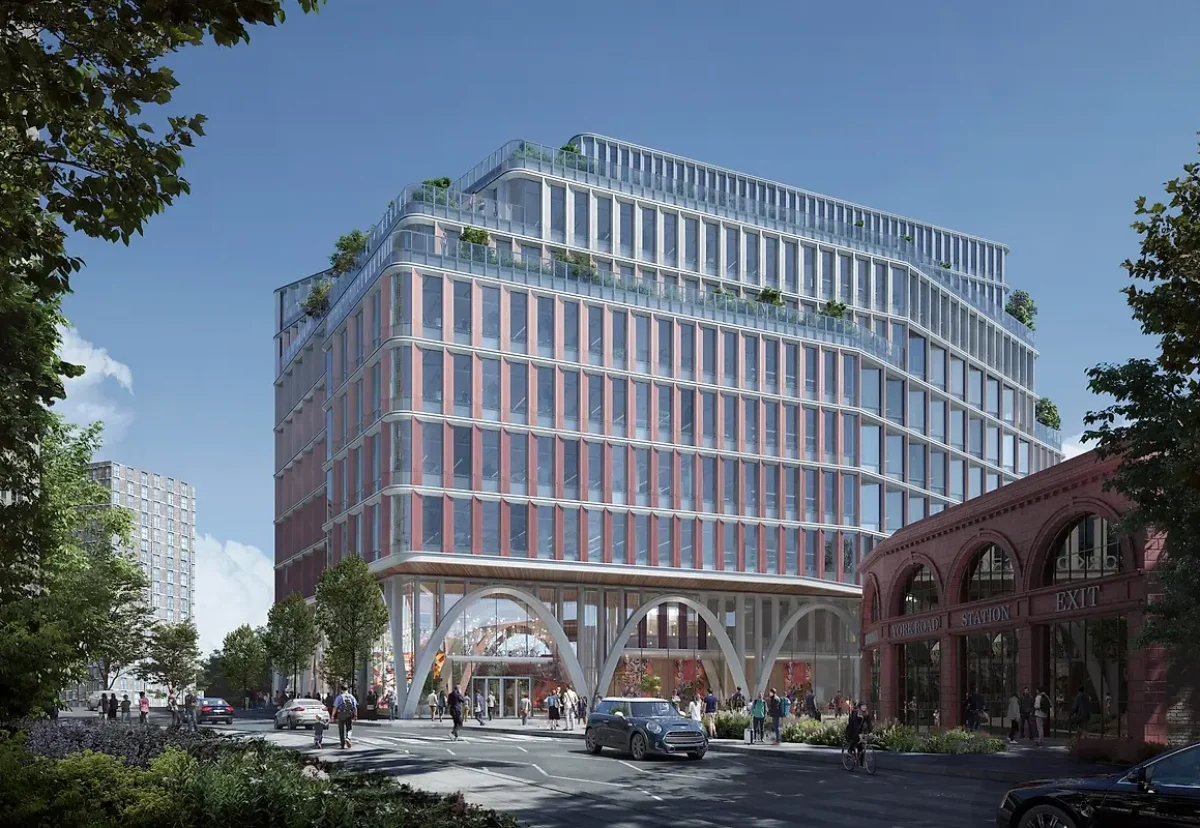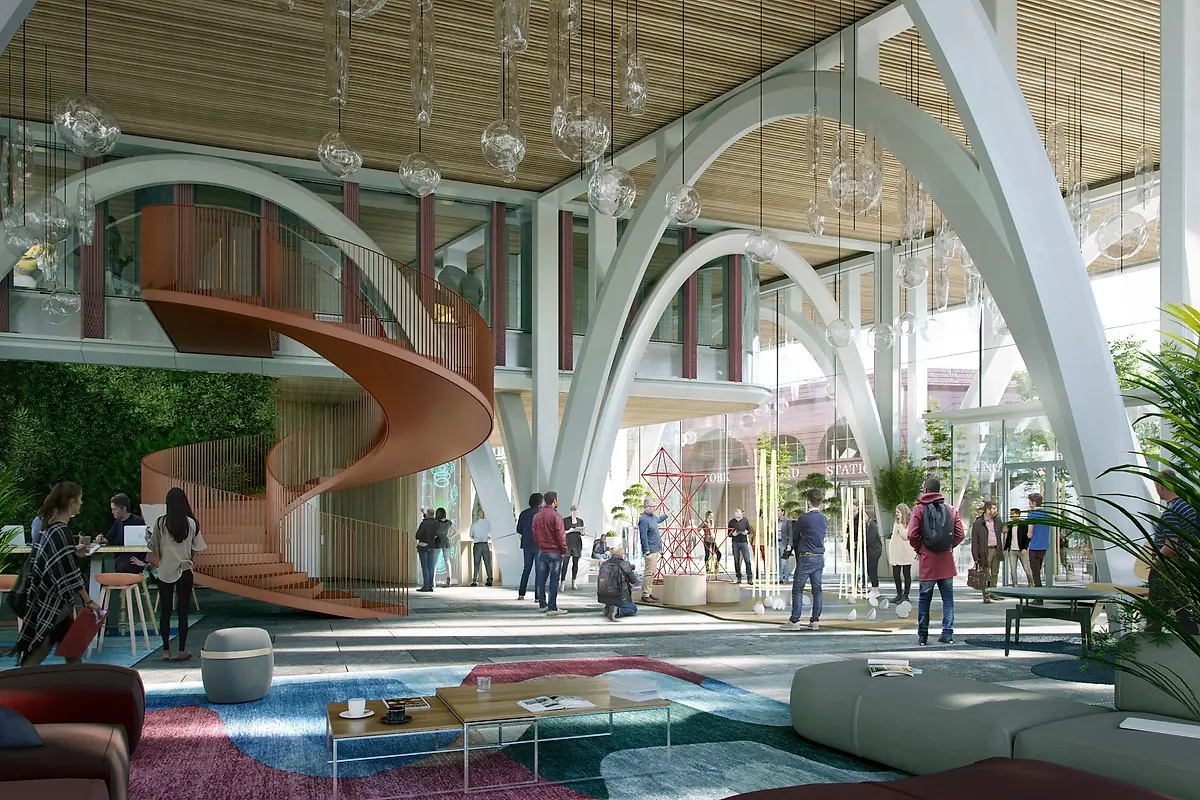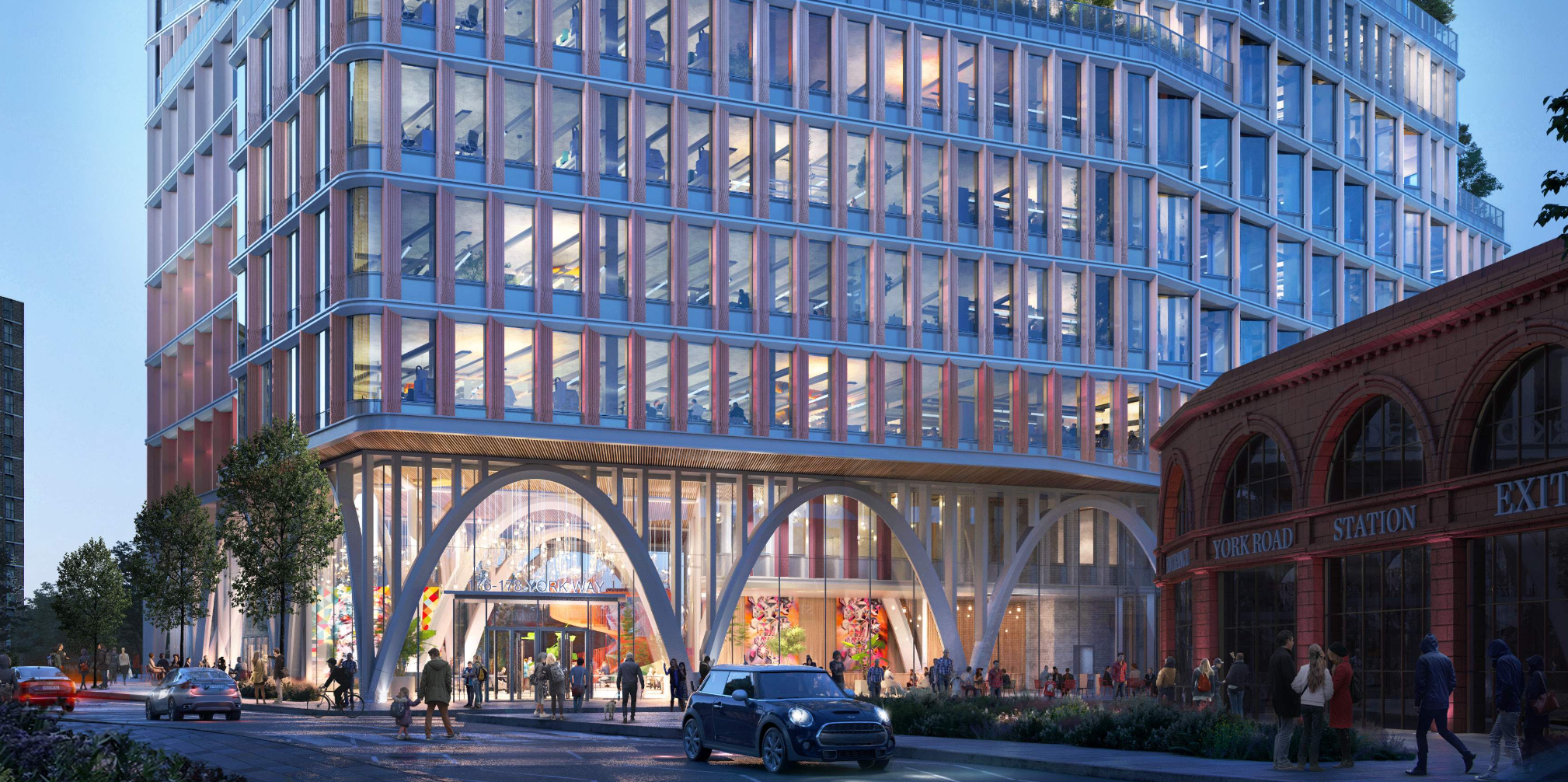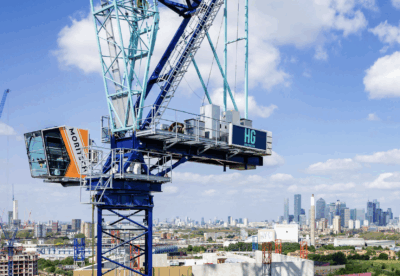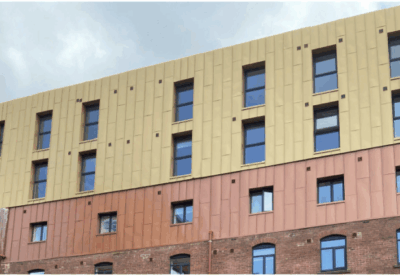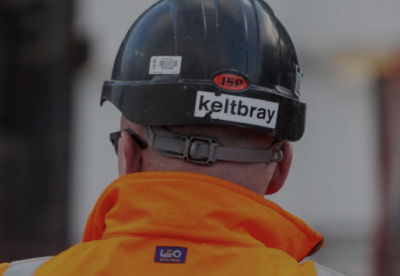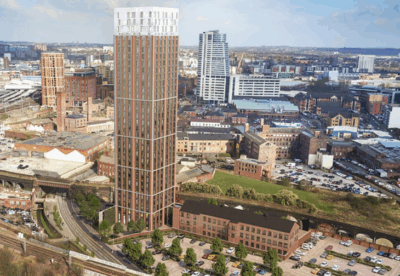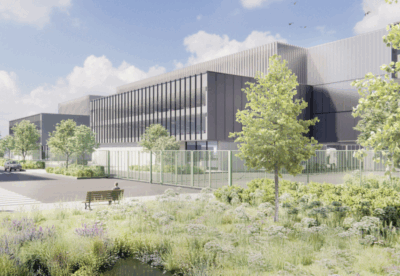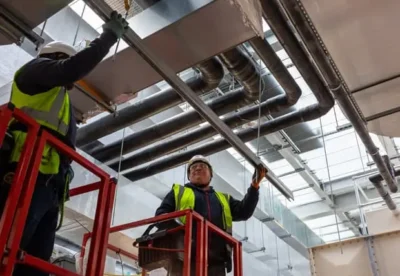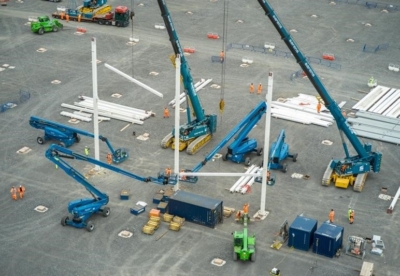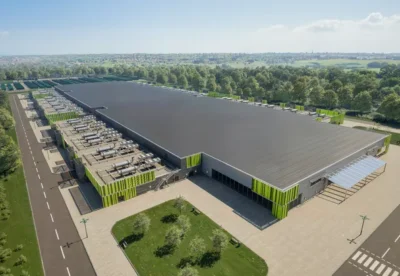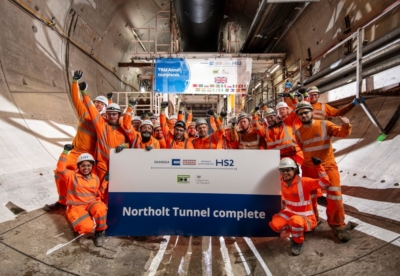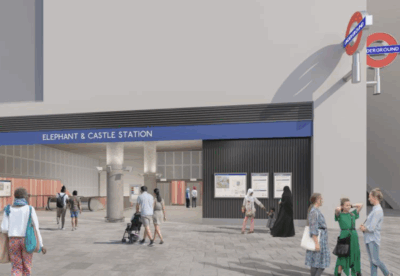The 200,000 sq ft life sciences and technology-focused building will be built on a brownfield site on York Way.
Delancey said it now hopes to start on site next year with construction completed in 2028. It is expected to cost around £170m to build and will employ an average of 300 workers a year during the 31-month demolition and construction programme.
Specialist contractor John F Hunt has advised Delancey on the demolition programme.
Structural engineer Arup alongside architect Kohn Pedersen Fox has had to come up with an innovative structural design to carry the building over three Network Rail tunnels and two Piccadilly Line tunnels running as close as 4.5 metres below the surface.
The structural strategy, developed with Arup, uses a deck-stiffened arch inspired by the 20th century bridges designed by the Swiss civil engineer Robert Maillart, with long-span arches to distribute the load of the building over underground railway lines.
The 176-178 York Way building will be split into 130,000 sq m of research and laboratory space, 13,000 sq ft affordable workspace, a mixed-use flexible community and events space.
The massing of the 9-storey building is stepped back in sequence to reduce the perceived scale at street level.
Passive and active strategies have been taken to reduce the whole life carbon. These include an all-electric MEP strategy, roof mounted PV and optimised external shading to reduce operational energy and with careful material selection and structural efficiencies to reduce embodied carbon. The development is targeting Nabers 4.5+ Stars.
Nathan Watt, Development Director at Delancey said:“We are delighted to have secured resolution to grant planning unanimously for this progressive, innovatively designed development that offers cutting-edge sustainable facilities.
The project will deliver dramatic public realm improvements and provide much-needed office, science and technology workspace.”





